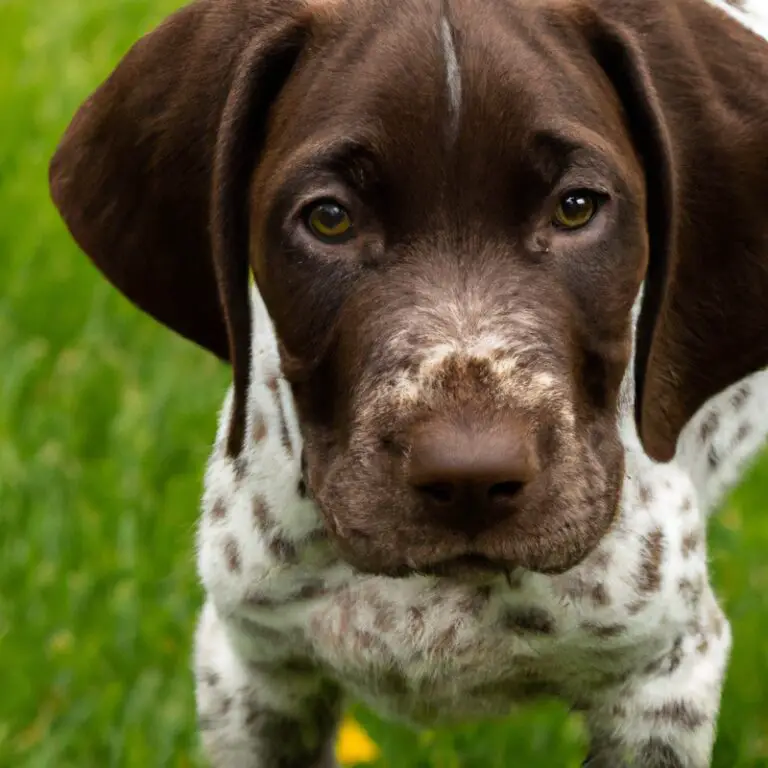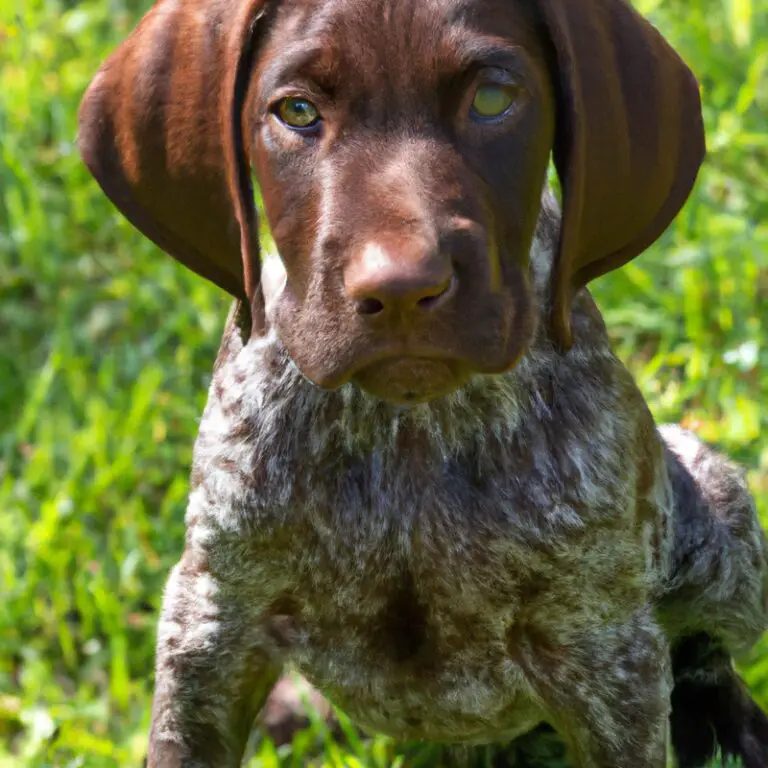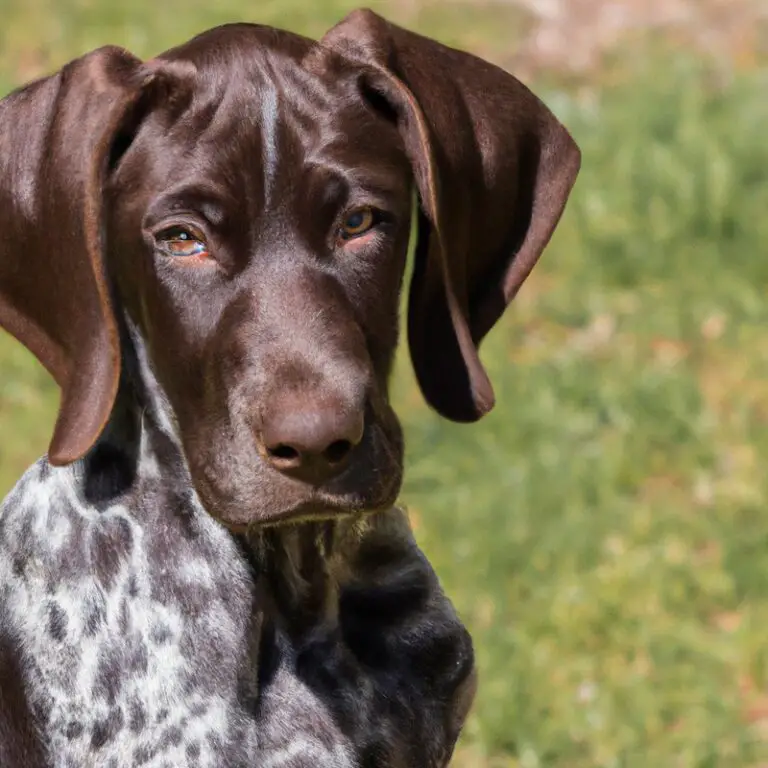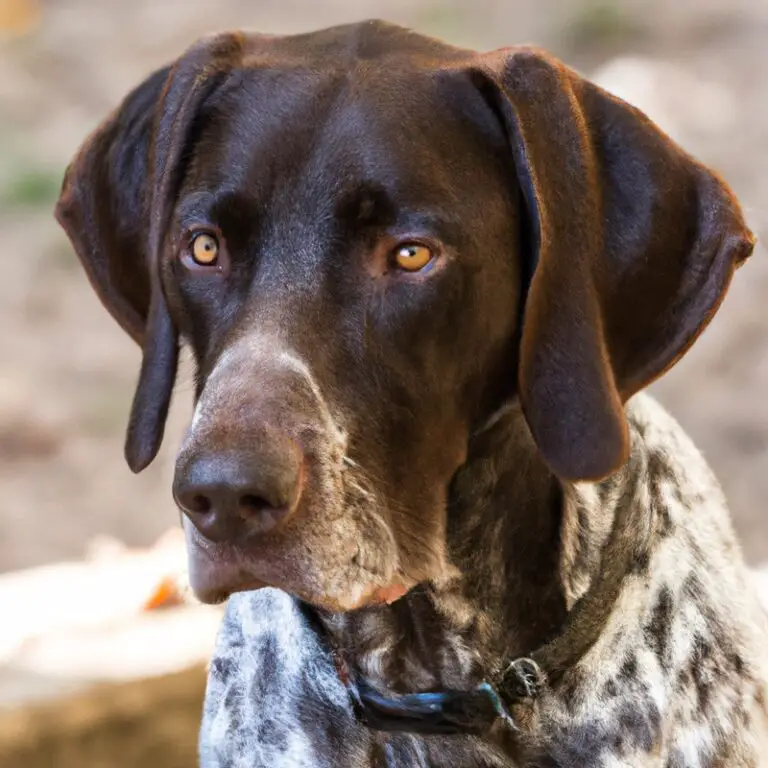How Do I Introduce My German Shorthaired Pointer To New People?
Key Takeaways:
- Start by socializing your German Shorthaired Pointer at a young age to help them become more comfortable with meeting new people.
- Use positive reinforcement techniques, such as treats and praise, to positively associate meeting new people with enjoyable experiences for your dog.
- Gradually expose your German Shorthaired Pointer to different types of people in different environments to help them adjust and feel more at ease.
- Remember to always prioritize your dog’s safety and well-being when introducing them to new people, and don’t force interactions if your dog is fearful or anxious.
Are you the proud owner of a German Shorthaired Pointer and wondering how to introduce your energetic and sociable companion to new people? Well, you’ve come to the right place! As an expert in dog training and behavior, I understand the unique challenges and rewards that come with this amazing breed.
German Shorthaired Pointers possess natural instincts and hunting abilities, making it crucial to approach introductions with care and patience.
In this article, I’ll share practical tips on preparing your dog for introductions, creating a positive environment, and dealing with common challenges. So, grab a treat and get ready to learn how to make every introduction a success!
| Method | Description |
| 1. Gradual Introduction | Introduce your German Shorthaired Pointer (GSP) to new people gradually by starting with short, positive interactions in controlled environments. |
| 2. Positive Reinforcement | Use positive reinforcement techniques, such as treats or praise, to reward your GSP for calm and friendly behavior around new people. |
| 3. Socialization | Expose your GSP to different social situations and environments from an early age to help them become more comfortable and confident around new people. |
| 4. Respect Boundaries | Teach your GSP to respect personal space and boundaries by using commands like “leave it” or “back off” if they become overly excited or invasive towards new people. |
| 5. Patience and Positive Attitude | Be patient and maintain a positive attitude during the introduction process. Your GSP can pick up on your emotions, so remaining calm and confident will help them feel more at ease. |
Understanding the nature of German Shorthaired Pointers
Energetic and sociable breed
German Shorthaired Pointers are known for being an energetic and sociable breed. They have a lot of energy to burn and thrive in an active environment.
These dogs love to play, run, and explore, making them great companions for individuals or families who enjoy outdoor activities or exercise.
It’s important to provide them with plenty of mental and physical stimulation to keep them happy and balanced. Regular exercise, such as daily walks or runs, interactive playtime, and even participation in dog sports, can help tire them out and prevent behavioral issues that may arise from pent-up energy.
In addition to being active, German Shorthaired Pointers are also highly sociable.
They enjoy being around people and often have a friendly and outgoing nature. This makes them generally friendly towards strangers and open to meeting new people.
When introducing your German Shorthaired Pointer to new people, it’s best to ensure the environment is calm and controlled.
Give your dog a chance to approach the person at their own pace and provide positive reinforcement and rewards for good behavior. It’s also important to socialize them from a young age, exposing them to a variety of people, places, and other animals to help them develop good social skills.
This will help them become well-adjusted and friendly dogs who enjoy the company of both familiar and unfamiliar individuals.
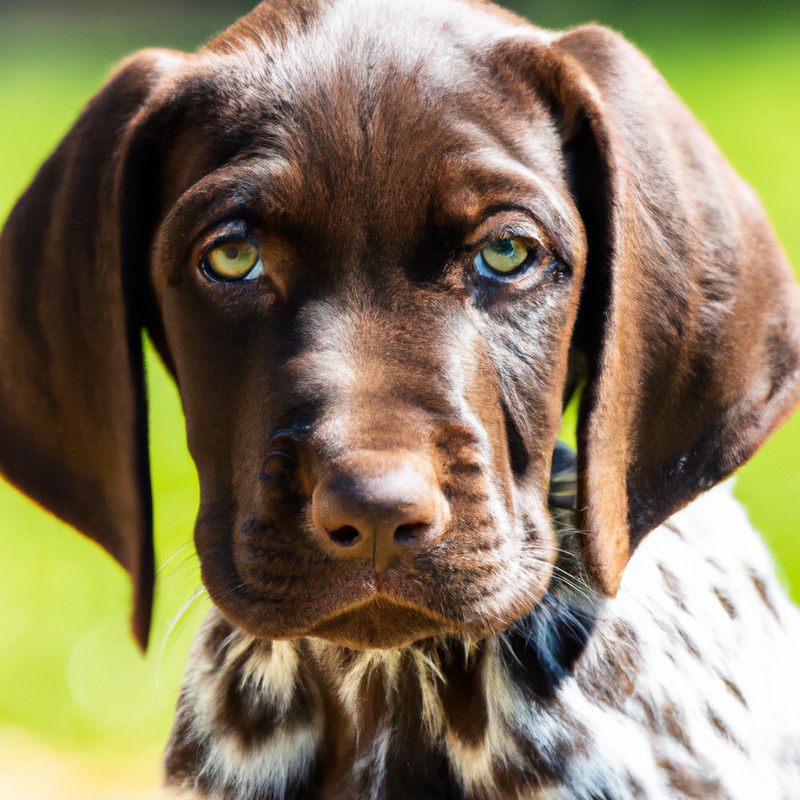
Natural instincts and hunting abilities
German Shorthaired Pointers have strong natural instincts and exceptional hunting abilities. They were originally bred as hunting dogs, and these traits are still deeply ingrained in their DNA.
Their keen sense of smell, agility, and athleticism make them excellent hunters for various game, such as birds and small mammals.
These dogs have a strong prey drive and are known for their determination and energy in the field. Their natural instincts and hunting abilities need to be recognized and understood by their owners to provide them with the mental and physical stimulation they require.
Preparing your German Shorthaired Pointer for introductions
Socializing your dog from an early age
Socializing your dog from an early age is essential for their overall well-being and behavior. By exposing your dog to different people, animals, and environments, you can help them become more confident and adaptable in various situations.
First and foremost, start socializing your dog as soon as possible.
Take them to different places like parks, pet-friendly events, and even on walks around your neighborhood. Introduce them to new people, both adults and children, so they become comfortable around different individuals.
Encourage positive interactions with other dogs, too.
This will help prevent fear or aggression towards other animals. Remember to always reward your dog for good behavior during socialization, and take things at their own pace.
By incorporating socialization into your dog’s routine, you are setting them up for a happy and well-adjusted life.
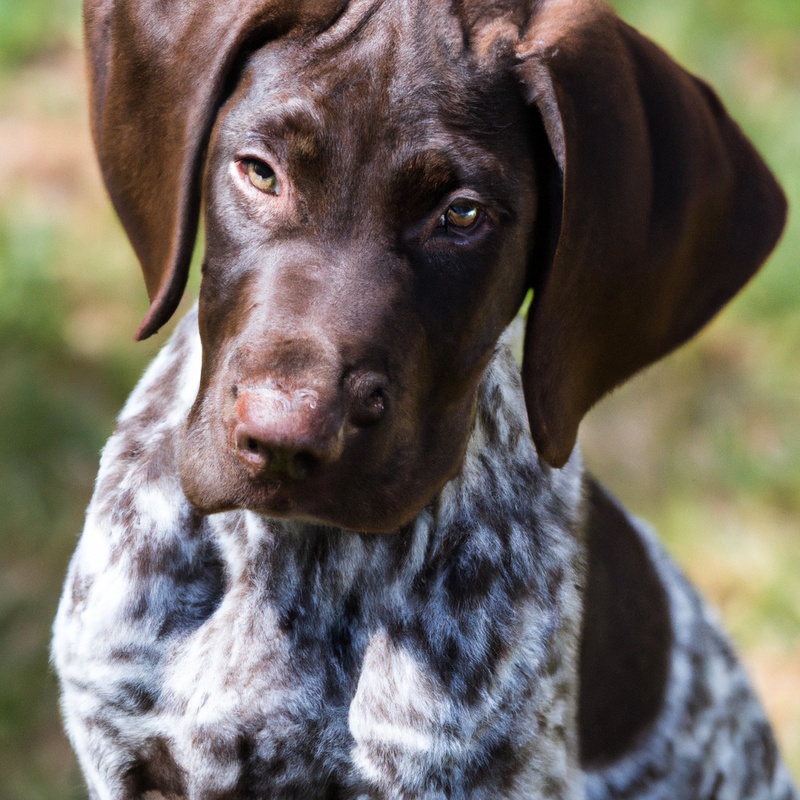
Basic obedience training
Basic obedience training is essential for your German Shorthaired Pointer’s well-being and behavior. It’s about teaching your furry friend to listen and respond to your commands.
And hey, it’s not as hard as it sounds! The key is to start early and be consistent.
First and foremost, teach your pup some basic commands like sit, stay, come, and leave it. These commands will help you establish control and ensure your dog’s safety in different situations.
Use positive reinforcement, like treats and praise, to encourage good behavior.
Be patient and repeat training sessions regularly. Another crucial aspect of obedience training is leash manners.
Teach your dog to walk politely on a leash without pulling or lunging.
Practice walking in different environments with distractions. Reward your pup for walking nicely and redirect their attention if they get too excited.
Socialization is also an important element of obedience training.
Introduce your German Shorthaired Pointer to various people, animals, and environments to make them comfortable and well-behaved in different situations. Encourage positive interactions and reward good behavior during these socialization sessions.
Introducing your German Shorthaired Pointer to new people
Create a positive and calm environment
Alright, let’s talk about creating a positive and calm environment when introducing your German Shorthaired Pointer to new people. First and foremost, it’s important to remember that dogs pick up on our energy.
So, if you’re feeling anxious or stressed, your pup might feel the same way too.
To create a positive environment, start by staying relaxed and calm yourself. Take deep breaths and project a sense of ease.
This will help your German Shorthaired Pointer feel more at ease too.
Next, choose a quiet and comfortable space for the introduction. Avoid overcrowded places or areas with loud noises that might overwhelm your dog.
Additionally, use treats and positive reinforcement to reward your dog’s good behavior during the introduction.
This will help associate meeting new people with positive experiences.
Let your dog approach at their own pace
When introducing your German Shorthaired Pointer to new people, it’s important to let them approach at their own pace. Allow your dog to decide when they feel comfortable and ready to engage with someone new.
Pushing them into interactions can lead to anxiety or fear, which can result in negative experiences for your dog.
Pay attention to their body language and cues, and always respect their boundaries. This approach will help your dog build confidence and make positive connections with new people over time.
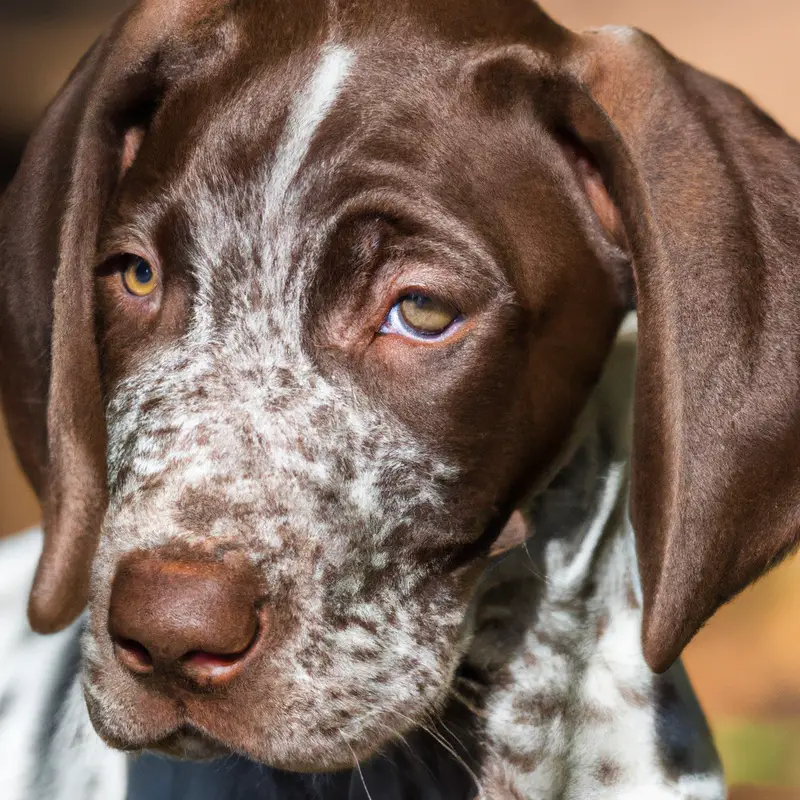
Tips for a successful introduction
Use treats as positive reinforcement
When introducing your German Shorthaired Pointer to new people, using treats as positive reinforcement can be really helpful. It’s a simple and effective way to make the experience positive for your dog.
Here’s how it works:
- Start by having some treats on hand that your dog really loves. This can be anything from small pieces of chicken or cheese to specialized dog treats.
- When introducing your dog to new people, keep the atmosphere calm and relaxed. This will help your dog feel more at ease.
- As soon as your dog approaches the new person without showing signs of fear or aggression, reward them with a treat and lots of praise. This helps your dog associate the presence of new people with something positive and pleasant.
- Repeat this process consistently, gradually increasing the interaction time with new people and rewarding your dog with treats each time they respond positively.
Teach your dog proper behavior during introductions
Teaching your dog proper behavior during introductions is essential for creating positive interactions with new people. First and foremost, start by training your dog in basic obedience commands such as “sit,” “stay,” and “leave it.” This will give you better control during introductions.
Next, expose your dog gradually to different social situations and new people.
Start with calm, controlled environments and gradually increase the level of stimulation. Reward your dog for calm and polite behavior during introductions, and redirect any unwanted behaviors.
Additionally, work on socializing your dog with other dogs and various individuals.
This will help build their confidence and teach them appropriate social skills. It’s crucial to remain calm and confident yourself during introductions, as dogs can pick up on your emotions.
Dealing with common challenges
Fear or aggression towards strangers
Fear or aggression towards strangers is a common challenge that many dog owners face, especially with German Shorthaired Pointers. It’s important to address this issue early on to ensure a positive and safe socialization experience for both your dog and other people.
One approach is to gradually expose your dog to new people in controlled environments.
Start by inviting a trusted friend or family member to your home and allow your dog to approach at their own pace. Keep the initial interactions short and positive, offering treats and praise for calm behavior.
When taking your dog outside, keep them on a leash and maintain a safe distance from strangers.
Reward your dog with treats and praises for calm behavior, gradually decreasing the distance over time. If your dog shows fear or aggression, it’s important to consult with a professional dog trainer or behaviorist for guidance and support.
Consistency and positive reinforcement are key in helping your German Shorthaired Pointer overcome fear or aggression towards strangers.
With time, patience, and the right training, your dog can become more comfortable and confident when meeting new people.
Excessive jumping and excitement
Excessive jumping and excitement can be a common challenge when introducing your German Shorthaired Pointer to new people. It’s important to address this behavior to ensure a positive and controlled interaction.
One key approach is to establish boundaries and teach your dog self-control.
Start by teaching them the “sit” command and consistently reinforce it. This will help them understand that they need to remain calm and still to receive attention or treats.
Another helpful technique is to reward calm behavior.
When your dog remains calm and doesn’t jump, shower them with praise, treats, or a favorite toy. This positive reinforcement will encourage them to stay calm in similar situations in the future.
Consistency is key.
Be consistent with training and reinforce the behavior you want to see. Remember, practice makes perfect, so keep training sessions frequent and short to keep your dog engaged and focused.
Lastly, provide alternative outlets for their energy.
Regular exercise and mental stimulation through walks, playtime, and puzzle toys can help reduce your dog’s overall excitement levels.
Ensuring a positive experience for everyone
Educating visitors on how to approach your dog
Educating visitors on how to approach your dog is essential to ensure a positive experience for everyone involved. First and foremost, make sure your visitors understand the importance of approaching your German Shorthaired Pointer calmly and gently.
Emphasize the need for slow movements and avoiding sudden gestures that could startle your dog.
Encourage them to give your dog space and allow the dog to approach them if they’re comfortable. Let your guests know not to invade your dog’s personal space right away and to avoid direct eye contact.
Also, remind them not to reach over your dog’s head or make sudden loud noises.
By educating your visitors on these simple guidelines, you can ensure a safe and enjoyable interaction for both your dog and your guests.
Supervising interactions and setting boundaries
Supervising interactions and setting boundaries are key when introducing your German Shorthaired Pointer (GSP) to new people. Firstly, it’s important to always supervise the initial interactions between your GSP and new individuals.
This will allow you to intervene if any issues arise and ensure everyone stays safe.
Additionally, setting boundaries is crucial. Teach your GSP basic commands and enforce them consistently, such as “sit” or “stay,” to provide structure and make interactions more predictable.
By supervising and setting clear boundaries, you can help create positive experiences for your GSP and new people alike.
Building trust and confidence over time
Gradually exposing your dog to new people
One important way to help your German Shorthaired Pointer get comfortable around new people is by gradually exposing them to different individuals. Start by introducing your dog to trusted friends or family members who are calm and patient.
Take it slow and let your dog approach and interact at their own pace.
Avoid overwhelming them with too many new people at once. As they become more comfortable, you can slowly increase the number of people and different environments they are exposed to.
Consistency in training and socialization process
Consistency in training and socialization is key when introducing your German Shorthaired Pointer to new people. It’s important to establish clear rules and boundaries from the start and stick to them.
By using the same commands and expectations consistently, your dog will learn what is expected of them and feel more confident in new social situations.
Be sure to reward positive behavior and redirect any unwanted behaviors immediately. Regular socialization outings will also help your dog become more comfortable and well-rounded around different people.
Seeking professional help if needed
Consulting with a dog trainer or behaviorist
If you’re having trouble introducing your German Shorthaired Pointer to new people, it may be beneficial to consult with a dog trainer or behaviorist. These professionals have extensive experience and knowledge in canine behavior and training techniques.
They can assess your dog’s specific needs and provide you with tailored guidance and strategies to help your dog become more comfortable and confident around new people.
By seeking the help of a professional, you can ensure that you are taking the most effective approach in introducing your German Shorthaired Pointer to new individuals.
Understanding the limitations of DIY training
Understanding the limitations of DIY training is important when it comes to effectively training your German Shorthaired Pointer. While it can be tempting to try and train your dog on your own, it’s essential to be aware of the potential challenges that may arise.
First and foremost, training a dog requires knowledge and expertise.
Without proper understanding of dog behavior and training techniques, it can be difficult to achieve the desired results. Every dog is unique, and what works for one may not work for another.
Additionally, DIY training may not address specific behavioral issues your dog may have.
Professional trainers have the experience and tools to identify and address underlying issues that may be hindering your dog’s progress. They can provide personalized strategies to effectively modify your dog’s behavior.
Furthermore, consistency and structure are crucial aspects of training, and it can be challenging to maintain this on your own.
Professional trainers can guide you in creating a routine and establishing clear expectations for your dog. Lastly, DIY training may take longer to achieve results compared to professional training.
Trainers have honed their skills and can often expedite the learning process through their expertise.
While it’s possible to train your German Shorthaired Pointer on your own, seeking professional help can provide invaluable guidance and support. Trainers can work with you and your dog to address specific needs, ensure effective training, and enhance the bond between you and your furry friend.
Final Verdict
Introducing your German Shorthaired Pointer to new people can be a rewarding experience with the right approach. By understanding their energetic and sociable nature, as well as their natural hunting instincts, you can prepare your dog for introductions.
Socializing them from an early age and providing basic obedience training are crucial steps.
Creating a positive and calm environment, letting your dog approach at their own pace, using treats as positive reinforcement, and teaching proper behavior during introductions are key tips for success. Addressing common challenges like fear or aggression towards strangers and excessive jumping and excitement requires patience and consistency.
Educating visitors on how to approach your dog, supervising interactions, and setting boundaries can ensure a positive experience for everyone.
Building trust and confidence over time through gradual exposure and consistent training is essential. Finally, seeking professional help when needed can provide additional support and guidance.
By following these steps, you can successfully introduce your German Shorthaired Pointer to new people and foster a strong bond of trust and confidence.



